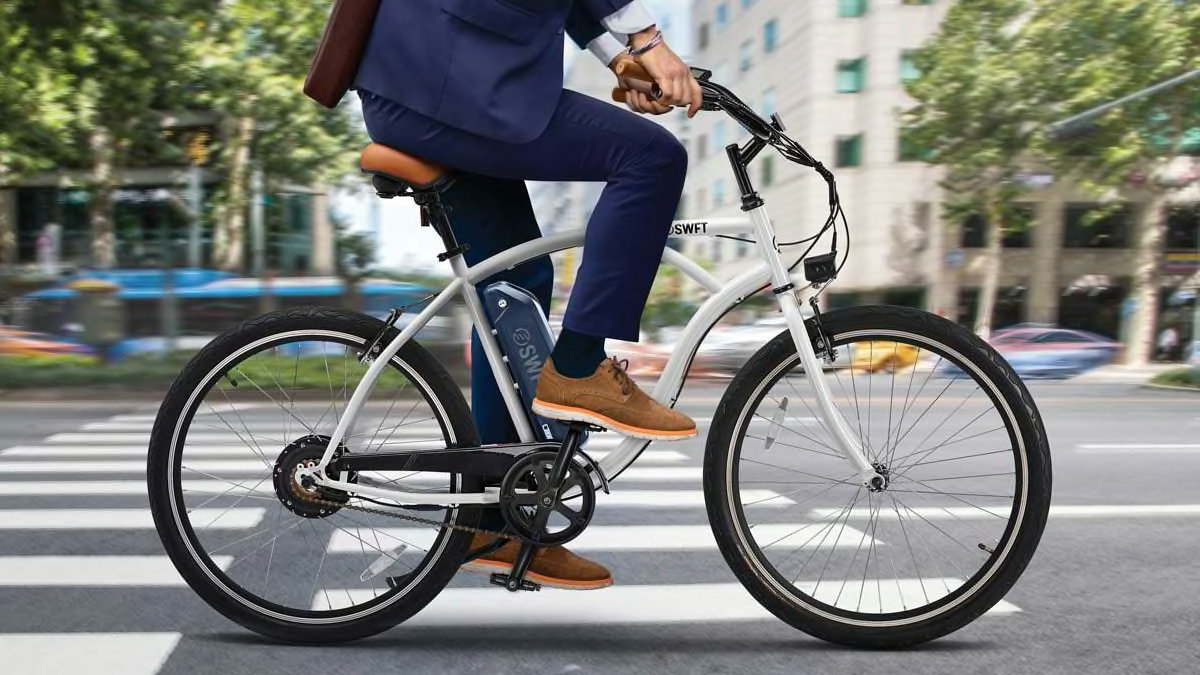
Electric Bike Buying Guide
Electric bicycles make riding easier and more appealing to an ever-growing number of people. They’re both a healthy recreational outlet and a frugal means of transportation compared with cars. It’s no wonder their popularity continues to rise.
Shoppers now have Consumer Reports’ expert guidance on a range of models, including our recommendations. CR’s e-bike ratings are based on each model’s electric range, performance, and features, as well as factors specific to each type of bike.
If you’re thinking about buying an electric bike, dig in and do some research first. There’s a lot to know before you choose a model. For starters, regulations differ from state to state, with some requiring an operator’s license for more powerful models and/or helmets to use e-bikes on public roads. Climate and terrain are other important considerations. Are there hills where you live, and is the weather good for riding? Eleven percent of Americans rode an e-bike between February 2023 and February 2024, according to a nationally representative survey conducted by CR of 2,035 adults in the U.S. (February 2024). The survey also found that among those who had ridden an e-bike or an e-scooter in the past year, fun and leisure activities were some of the reasons 71 percent chose to do so.
E-bikes tend to be more expensive than conventional bikes, so it pays to make sure a model will work for you before spending the money to buy one. A big part of that is taking the models that interest you for a test ride to ensure a good fit and comfort. CR’s evaluation of several e-bikes breaks down their characteristics into the areas that are most likely to affect you: range, acceleration, hill climbing, speed control response, and how the bike performs on just pedal power when the battery is out of juice.
Bicycles of all types, including e-bikes, are subject to the Trump administration’s tariffs, which took effect on April 2, 2025. As a result, bike manufacturers are raising prices. According to Bicycle Retailer and Industry News, Specialized is instituting a flat 10 percent surcharge on the invoices it sends to its retailers. Trek emailed its retailers that it is “raising prices across most Trek and Electra bicycle models” while trying to lessen the affect of tariffs on entry-level models. In an email, a spokesperson from Giant said that on May 1, 2025, select bicycles will be subject to an average price increase of seven percent, and some bicycles in abundant supply will have reduced pricing. The manufacturer will monitor their pricing and inventory levels and make adjustments as needed.
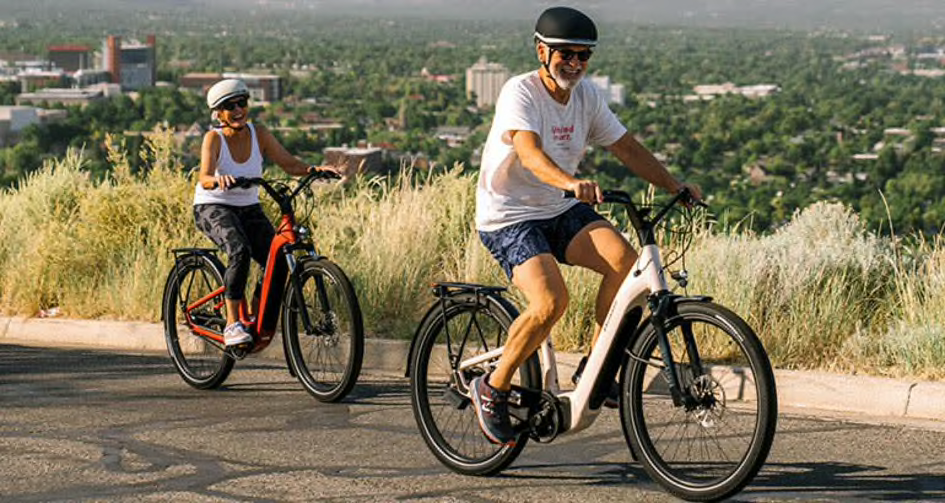
Photo: Specialized Photo: Specialized
E-Bike Classifications
Electric bicycles come in a range of styles to suit different uses—everything from riding steep mountain trails to getting to and from work. But there are three general categories related to their electric propulsion systems. Each type applies electric power to the bicycle’s driven wheel in a distinct way, whether using input from the rider’s pedals or from a thumb or twist-grip-activated throttle. Deciding which one is best for you depends on how you plan to use the bike and how far you want to go.
Class 1 represents pedal-assist bikes, which power the electric motor as your feet apply pressure to the pedals. There’s no throttle control on the handlebars to get the bike going; the electric part works only when the rider is pedaling, and the e-assist cuts off at speeds above 20 mph.
Class 2 bikes have an electric motor that works up to 20 mph, either while the rider is pedaling (pedal-assist) or with electric propulsion alone, via a throttle control.
Class 3 limits an e-bike’s top speed to 28 mph. These faster, more powerful models might not be legal to ride in some areas, such as on bike paths.
CR has tested Class 1 and Class 2 e-bikes but no Class 3 models. Prices range from about $600 to around $4,000, although most of the better ones cost at least $1,000. The highest-rated e-bikes tend to be the most expensive models in our tests, although none are anywhere near the $6,000 to $7,000 you might encounter at bike shops. (Prices can be much higher for certain specialty e-bikes.)
We’ve found that more selectable gears make for a better riding experience once the battery is drained and pedaling provides the only power. Single-speed bikes aren’t as versatile. Depending on the model, electric assist is applied either at the hub of the rear wheel or in what’s called a mid-drive, in which power is applied at the bottom bracket, where the pedals are located. Mid-drive models tend to be more responsive and typically route electric power through the bike’s gearing, which can help save battery power on hills and longer rides. Still, there are a number of hub-drive models that offer a reliable, satisfying ride.
Consumer Reports members can access our latest e-bike evaluations, including ratings on Class 1, Class 2, folding, and mountain bikes.
Types of Electric Bikes
Find the right e-bike for you.
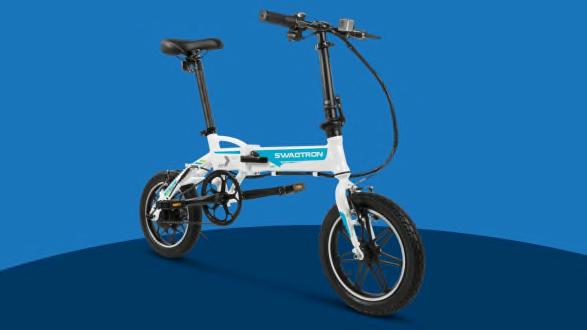
Commuter Bikes
Commuter bikes are built to serve as practical transportation. They come in a variety of styles, including models with narrow tires and straight handlebars, others with bigger tires and thicker frames, and folding e-bikes that make them easier to stow on a bus or train. For many people, e-bikes represent a much more cost-effective alternative to gas-powered scooters or even a car. Many like the fact that they can commute on an e-bike without getting too sweaty on the way to work because of the electric assist and that they aren’t as likely to get stuck in grinding car traffic.
Pros: Designed with versatility and comfort in mind, these e-bikes can be outfitted with fenders, lights, and other accessories to make them a viable alternative to a car for around-town errands and work commutes.
Cons: With sturdy construction designed to weather the punishment of daily use, commuter bikes tend to be a little heavier than some types of recreational models, especially with an electric motor and a battery added into the mix.

Cruisers
Built for comfort, cruisers often share many of the same attributes as commuter bikes. They offer a relaxed, comfortable upright seating position and often a softer ride because of bigger tires and cushier seats. Look for swooping handlebars that keep your arms at a relaxed distance from your body. The addition of an electric motor to either of these configurations makes it possible to use a thicker frame and wider tires to soak up bumps in the road.
Pros: Plush seats, wider tires, and a relaxed upright seating position make for a comfortable ride. They’re great for leisurely cruises around town.
Cons: Cruisers might not have the gear selection of more utilitarian or sport-oriented models, meaning they’re usually not as well-suited for longer distances.
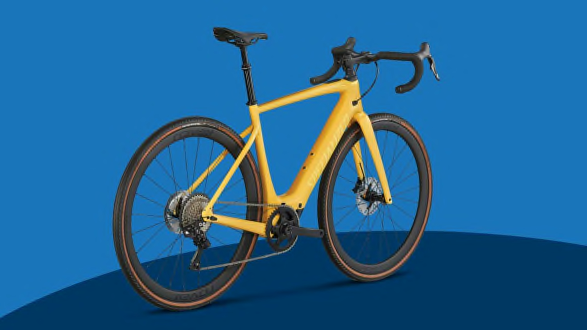
Performance Road Bikes
Road bikes usually have a lightweight frame, narrower tires than cruisers or mountain bikes, and drop-down handlebars that help you maintain an aerodynamic position. Like their pedal-powered counterparts, electric road bikes feature slimmer, lighter components to increase efficiency. The assistance offered by an electric motor makes it possible to cover longer distances and handle steeper grades with less fatigue than with conventional bicycles.
Pros: Lightweight and built for speed, these bikes can cover longer distances with ease. The electric motor and battery mean you can travel even farther—or climb steeper hills—than on a conventional road bike while still getting a workout.
Cons: These models tend to be expensive, and the aggressive riding position can be uncomfortable for some riders.
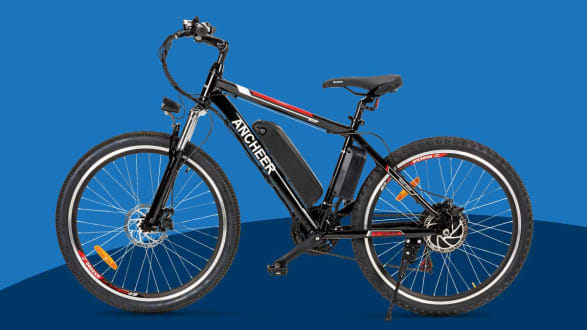
Mountain Bikes
With beefier frames, bigger tires, front suspension forks, and sometimes long-travel rear suspension components, mountain bikes are built to handle trails, large rocks, logs, and other rough terrain and obstacles. The fun part of mountain biking is the faster, more effortless downhill thrill riding, but getting there usually involves a demanding pedal up steep grades on loose terrain. Adding an electric motor to a mountain bike makes a lot of sense for someone who wants the fun without experiencing as much fatigue.
Pros: Electric mountain bikes can help riders maximize trail time and quicken the pace of the uphill portions of a ride. They can also expand access to mountain biking to people who might not have the fitness to handle the more grueling parts of off-road riding.
Cons: While conventional pedal-powered mountain bikes are allowed at more places than ever, their electric counterparts might not be permitted on some trails because their weight, power, and speed can potentially damage trails. Be sure to check state and local regulations first.
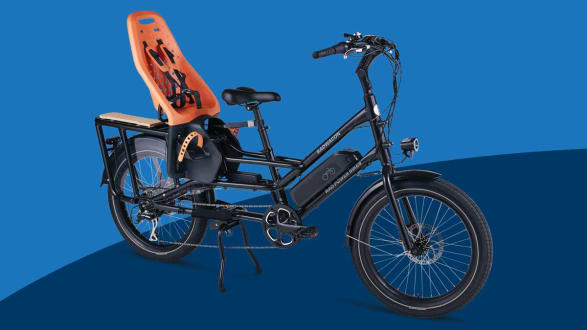
Cargo Bikes
Their strong frames, fat tires, and robust components make cargo bikes the industrial beasts of the two-wheeled world—purpose-built to haul bulky items and passengers. Pedal-powered cargo bikes have been around for a while, and the electric versions make it even easier to transport a lot of weight on two wheels. Like their pedal-only forebears, cargo e-bikes can be configured with rear-mounted seats, cargo racks, or front-end cargo boxes supported by one or two wheels. Bicycle taxis can also be included in this group. The two-wheeled models are popular for urban delivery and ferrying children.
Pros: Adding more weight to anything makes it more difficult to move around, and electric propulsion can be appealing to anyone who wants to use the bicycle as an alternative to a car, say, for running errands and carrying groceries.
Cons: Cargo bikes are larger and heavier than most other types of bicycles, and adding a battery and an electric motor makes them weigh even more.
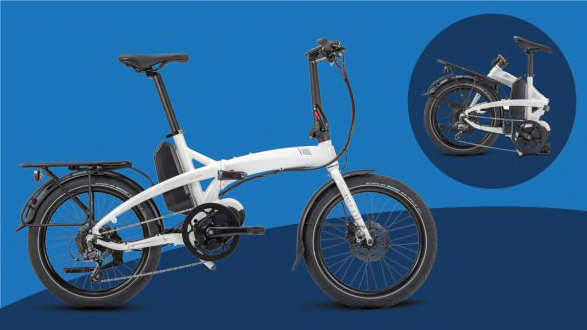
Folding Bikes
Although they come in a wide variety of sizes, shapes, and styles, folding bikes probably fit most neatly next to the commuter bike category. Depending on the model, they can also fit neatly in the trunk of your car or in the luggage compartment of a commuter train. Typically, though, these practical bikes feature a frame that folds in half and, on many models, smaller wheels and folding handlebars and pedals. Not all folding bikes are created equal, so you should make sure any model you’re looking into buying has what you need. Because features vary so widely in this category, you’re just as likely to find a folding bike with fat tires (better for bumps) and a wide, plush seat as you are to find one that keeps parts small and lightweight to aid portability. Electric assist can help those who want to avoid getting sweaty while pedaling.
Pros: If you need to carry your bicycle in a car and don’t have or want a bike rack, the right folding bike will probably stow in your trunk, along with a lot of other stuff. Folding bikes also tend to be easier to carry. They can often be taken on buses and trains, and they can be stored in small apartments and other places with limited space. After all, if you need to get around quickly and don’t want to walk, drive, or take a bus, having a folding bike is better than having no bike at all.
Cons: Lighter-weight models that pack down smaller and are easier to stow and carry tend not to ride as smoothly as larger, heavier bikes with thicker, more sturdy frames and bigger wheels and tires for absorbing bumps. Electric assist, while helpful in the pedaling department, also adds a significant amount of weight, making the bike more difficult to lift and carry.
How to Buy an E-Bike
Take your time to find a model that fits you physically and will meet your long-term needs. If you’re in a hilly area, you may want one with a higher number of gear selections to save energy—both yours and that of the battery. Consult local regulations so that you know what, if anything, is required to ride an e-bike in your area, and where you’re allowed to ride one.
There are a number of newer brands that specialize in building e-bikes, like Rad Power Bikes and Blix Electric Bikes. You may be unfamiliar with them, but some of these are strong companies with innovative products and good customer support. Be wary of internet bike brands that might not be there tomorrow to offer customer service. Diligence is warranted if you stray from the long-standing name brands, including Cannondale, Specialized, and Trek.
We’re also not bullish on any type of bike sold through big-box stores. The salespeople are seldom bicycle experts. This can affect assembly and repairs, and you might wind up spending any money you saved trying to get a budget bike to work properly. Many bike retailers won’t even service models sold from big-box outlets because the quality is so poor.
Another option is to buy a bike from a direct-to-consumer manufacturer. But it will need some final assembly, such as fitting the handlebars, seatpost, and pedals. You’ll need some mechanical aptitude, and you might need specific tools such as a hex or Allen key and a torque wrench. You may find it challenging to set up a disc-brake model without the pads rubbing on the rotor. You can take the bike to a local shop for assembly, but it will cost you.
That said, most bike shops sell e-bikes, and the sales and service staff are typically quite knowledgeable about them. Plus, they can help you make a solid choice if you decide you want to buy one.
We always recommend test-riding any bike before buying it. You should get a sense of how it feels, brakes, and shifts. (A dealer can customize the fit for you.) Some dealers will also allow you to rent an e-bike, giving you a chance for an extended ride on the road or trail you plan to frequent. Even if it’s not identical to the model you want to purchase, renting lets you gain additional seat time to settle on the style of e-bike that works best for you.
Once you’ve selected the model you want, keep in mind that it can be—and should be—further customized. The handlebar tape or grips, the pedals, and especially the saddle are your points of contact and control. Your hands, feet, and butt have to perch comfortably, and all of the bike’s parts should be adjusted to fit you. For instance, a new stem can lift the handlebars closer to your torso. A dealer can also add features for you that might not come with a bike, such as a bell, head and taillights, fenders, water bottle holders, a phone mount, and even a luggage rack. But the key is getting the fit right.
If you haven’t purchased a new bicycle in a while, you might be in for some sticker shock. Bicycles—especially electric ones—can be a relatively big-ticket item. In addition, tariffs on imported bicycles and parts will also increase prices.
Some bicycle shops offer layaway plans, where you make a down payment and pay the bike off in installments. The store will hold on to the bike until you are fully paid.
There are buy now, pay later options, and these vary in how they’re set up. A large finance company, Affirm, offers some 0 percent options, but it can also charge interest rates between 10 and 30 percent. Klarna is a competitor, and it’s more likely to offer a “pay in four” plan that has 0 percent interest on a four-month loan. How do these banks make a cent on zero-interest loans? Simple: Merchants or exercise bike brands like Peloton, which has zero-interest loans through Affirm, are fronting the finance charges because moving inventory is more valuable to them than making a few extra bucks off the financing.
Our advice: Consider the possibility of high interest rates before signing up for any buy now, pay later plan.
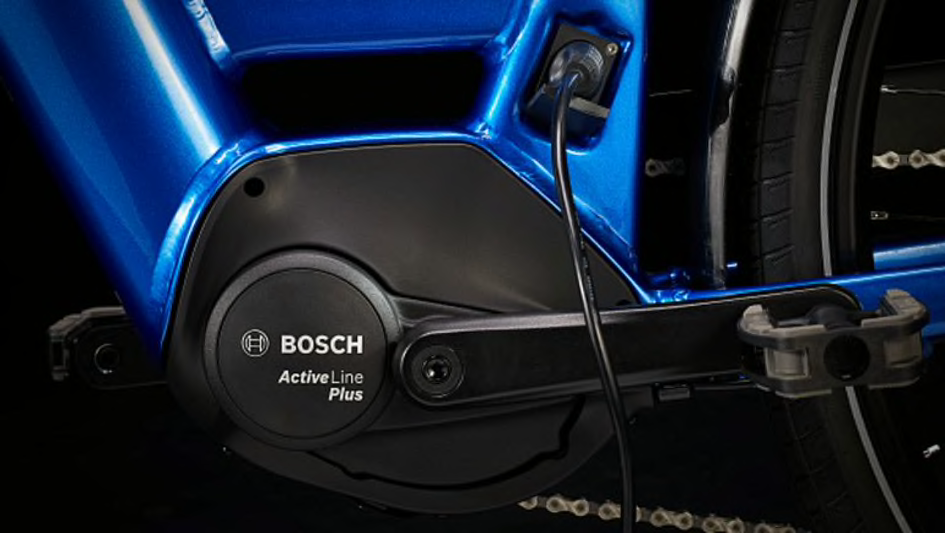
Photo: Bosch Photo: Bosch
Safety Considerations
Although e-bike batteries and their electronics are generally very safe, a faulty battery or charging equipment can cause a major fire that could lead to injury or death. In New York City, where e-mobility devices have been in use for a while, lithium-ion battery fires associated with e-bikes and e-scooters are a growing problem, mostly due to the availability of batteries and related parts that aren’t properly tested. An investigation by CR found that these inadequately tested products were a major contributor to fire danger.
In choosing an e-bike, we strongly recommend considering only bikes (and replacement batteries) that have been tested by Underwriters Laboratory (UL) or another nationally recognized laboratory. (Otherwise, there can be serious safety risks.)
The New York City Fire Department has a number of safety tips related to e-mobility devices:
- Buy an electric bike that is certified by a qualified testing organization such as UL. The same applies to other devices powered by a lithium-ion battery.
- Follow the manufacturer’s instructions for charging and storage.
- Always use the manufacturer’s cord and power adapter made specifically for the bike.
- Don’t leave an electric bike unattended while it’s charging, and don’t leave it charging overnight.
- If a battery overheats or you notice an odor, a change in shape or color, leaking, or odd noises, stop using it immediately.
- If the battery reacts in an alarming way, and it’s safe to do so, move the device away from anything that can catch fire and call 911.
- Keep batteries and devices at room temperature. Don’t place them in direct sunlight.
- Store batteries away from anything flammable.
- Don’t use aftermarket batteries.
- Don’t charge an electronic device under your pillow, on your bed, or near a couch.
- Don’t block your primary way into and out of your house, apartment, or building with an e-bike or other device.
- Don’t leave an e-bike in a child’s room (or bedrooms in general).
- Dispose of used batteries in accordance with state and local regulations.
Consider the Extras
We can’t stress enough that you should always wear a bike helmet. It’s the single most important measure you can take to prevent serious injury or death while riding an electric bicycle (or any bicycle, for that matter). Gloves can help absorb vibrations and protect your hands if you take a spill. Polycarbonate glasses can shield your eyes from bugs and errant pebbles. A water bottle is handy to have on long, hot-weather rides, too, so consider having a water bottle holder installed on your e-bike. High-visibility clothing can help others see you. Our guide to bike riding safety also covers why you should add USB-rechargeable lights for greater visibility—and how to ride to ensure both comfort and safety.
There are a lot of options when it comes to customizing an e-bike. A bike shop may swap certain components at little or no cost, but it’s important to factor this into your overall budget so that you have some funds left over after purchasing the bike for upgrades. Adding a bell, a headlight or taillight, a phone mount, or water bottle holders is quick and easy, and the shop may install it at no extra charge. But the cost of getting a new seat or stem can range from $30 to well over $200 even before you add in the cost for the shop to install it.
Electric Bike Features
You can read in detail about electric bike features in our slideshow below.
- 1
- / 6
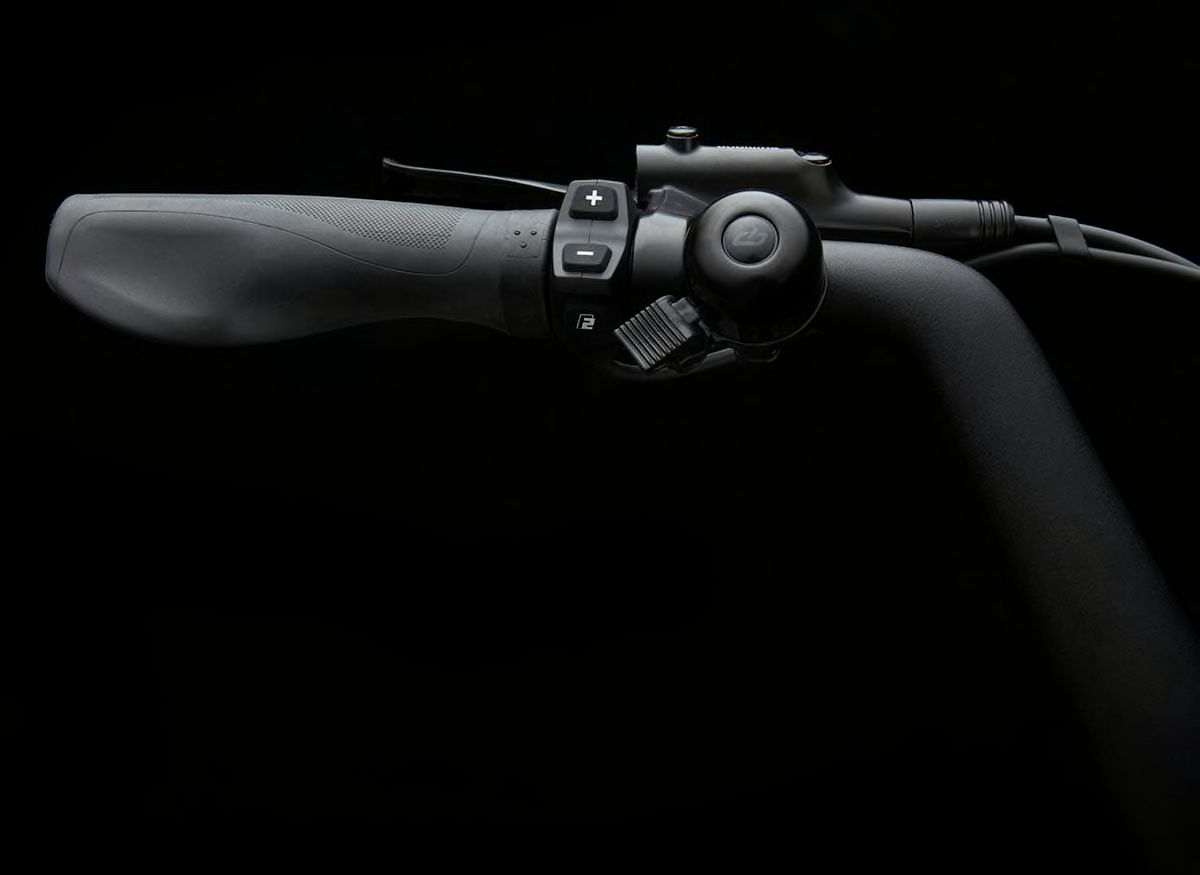
Grip
Class 2 e-bikes have some sort of throttle to activate the electric motor, usually a twist grip or thumb switch.
PHOTO: SPECIALIZED
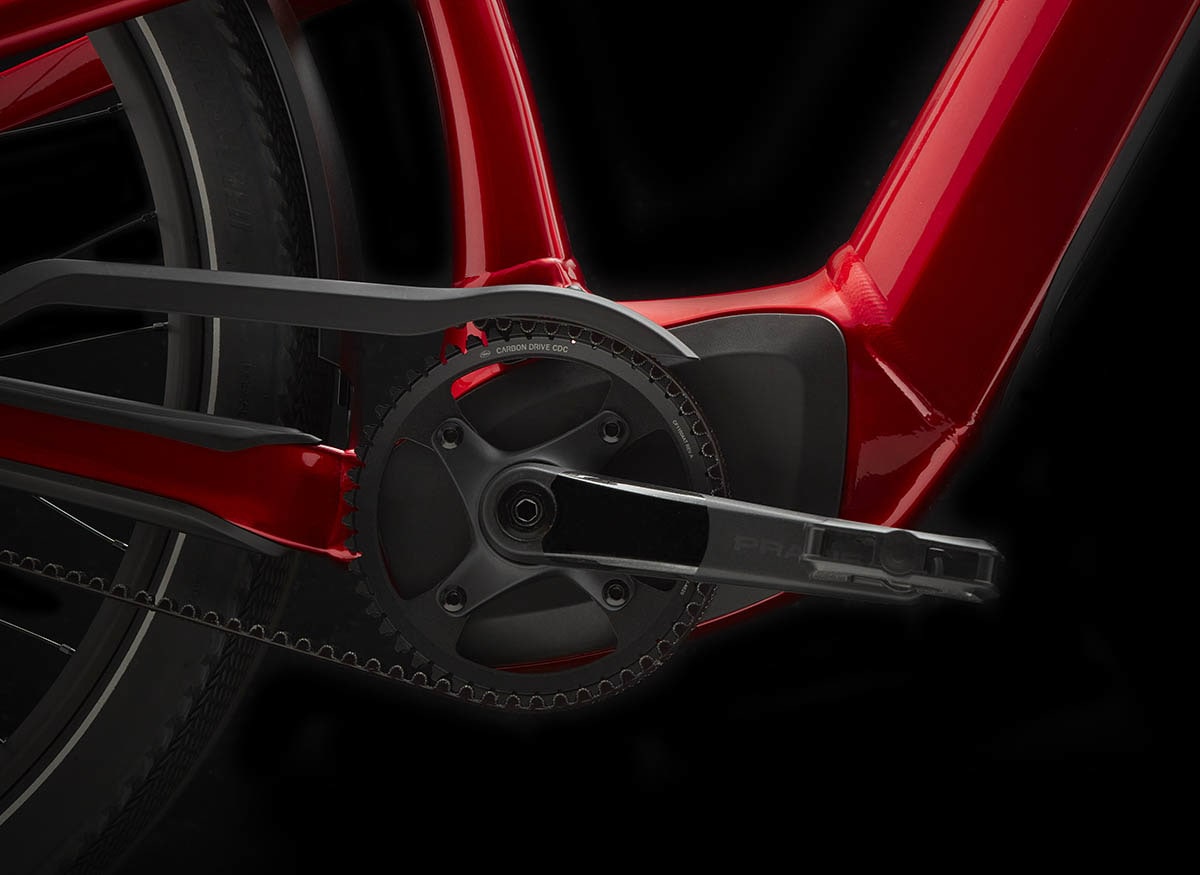
Integrated Battery
Some e-bikes feature removable batteries that can be charged in a different location from the bicycle, while others—such as the model shown here—have batteries that are part of the frame.
PHOTO: SPECIALIZED
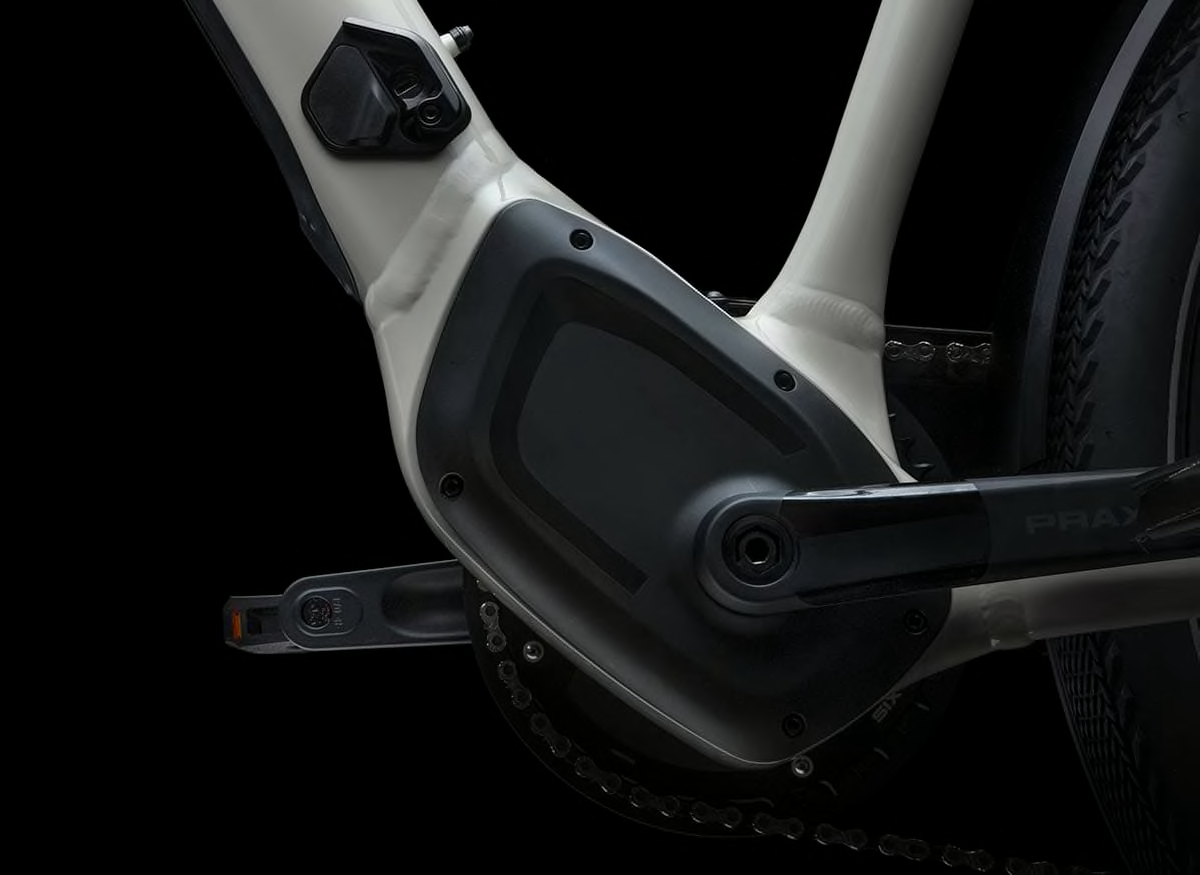
Mid-Drive Motor
Electric motors mounted in the bottom bracket, where the pedals are, typically come in pedal assist-activated e-bikes. They allow the full range of gears you would find on a conventional bicycle.
PHOTO: SPECIALIZED
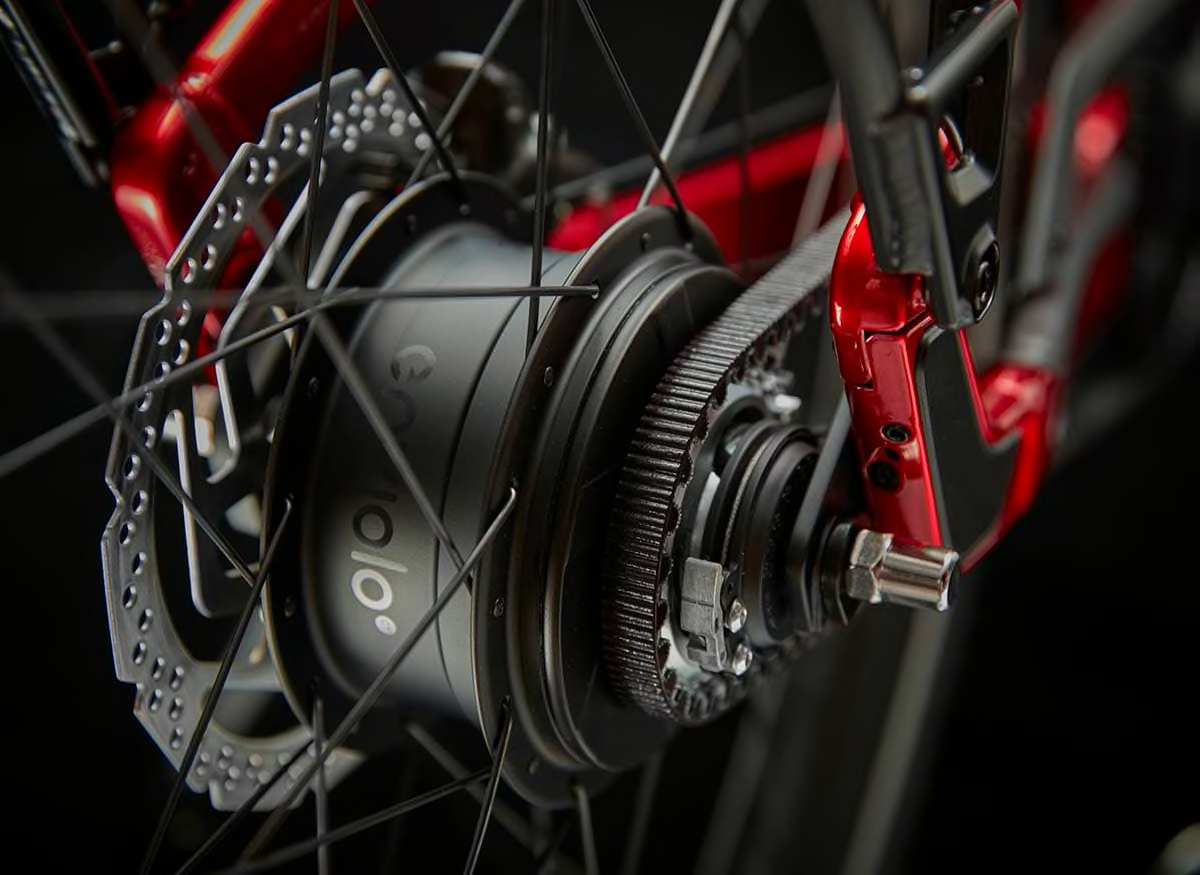
Rear Motor
When the electric motor is mounted in the rear hub, it can limit the number of gears an e-bike can have, which can affect battery life during a ride.
PHOTO: SPECIALIZED
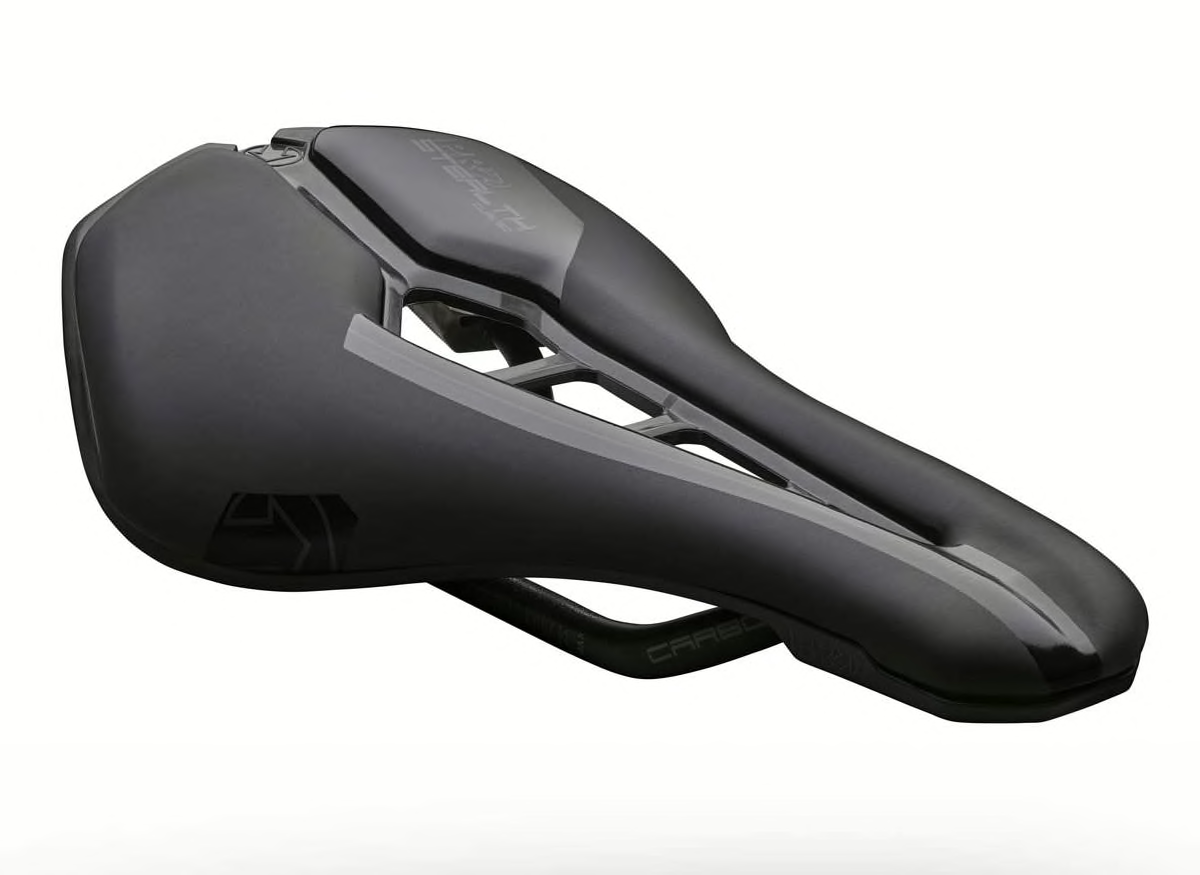
Saddle
Think of a saddle much like shoes: You wouldn’t wear something that’s too big or too small, so don’t automatically accept the default saddle that comes with a bike. It may sound counterintuitive, but a super-padded saddle may not be the most comfortable for how you plan to use your bicycle.
Keep in mind that a bicycle retailer will help fit you to the bike so that you can safely operate it, something you won’t find when buying from a big-box retailer. But it may charge extra for a more comprehensive bike-fitting session. This is a wise investment, particularly if you plan to ride extensively. An improper fit can cause discomfort or pain; at the least, it will make bike rides less enjoyable. The money spent on a 30- or 60-minute session will be well worth it down the road.
PHOTO: SHIMANO
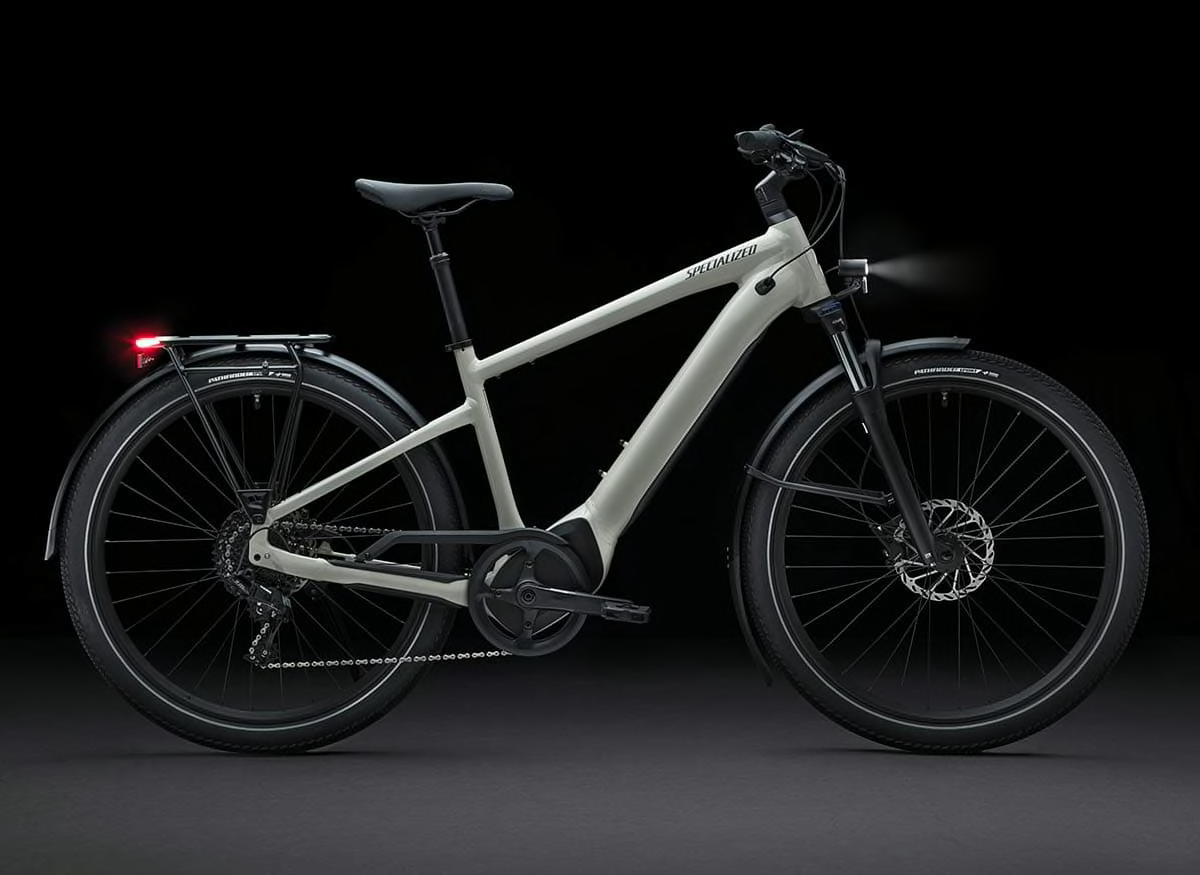
Cargo Bike
Commuter e-bikes can be accessorized with wheel fenders, lights, luggage racks, and other equipment designed to make it more comfortable and useful.
PHOTO: SPECIALIZED
Grip
Class 2 e-bikes have some sort of throttle to activate the electric motor, usually a twist grip or thumb switch.
PHOTO: SPECIALIZED
Integrated Battery
Some e-bikes feature removable batteries that can be charged in a different location from the bicycle, while others—such as the model shown here—have batteries that are part of the frame.
PHOTO: SPECIALIZED
Mid-Drive Motor
Electric motors mounted in the bottom bracket, where the pedals are, typically come in pedal assist-activated e-bikes. They allow the full range of gears you would find on a conventional bicycle.
PHOTO: SPECIALIZED
Rear Motor
When the electric motor is mounted in the rear hub, it can limit the number of gears an e-bike can have, which can affect battery life during a ride.
PHOTO: SPECIALIZED
Saddle
Think of a saddle much like shoes: You wouldn’t wear something that’s too big or too small, so don’t automatically accept the default saddle that comes with a bike. It may sound counterintuitive, but a super-padded saddle may not be the most comfortable for how you plan to use your bicycle.
Keep in mind that a bicycle retailer will help fit you to the bike so that you can safely operate it, something you won’t find when buying from a big-box retailer. But it may charge extra for a more comprehensive bike-fitting session. This is a wise investment, particularly if you plan to ride extensively. An improper fit can cause discomfort or pain; at the least, it will make bike rides less enjoyable. The money spent on a 30- or 60-minute session will be well worth it down the road.
PHOTO: SHIMANO
Cargo Bike
Commuter e-bikes can be accessorized with wheel fenders, lights, luggage racks, and other equipment designed to make it more comfortable and useful.
PHOTO: SPECIALIZED




























